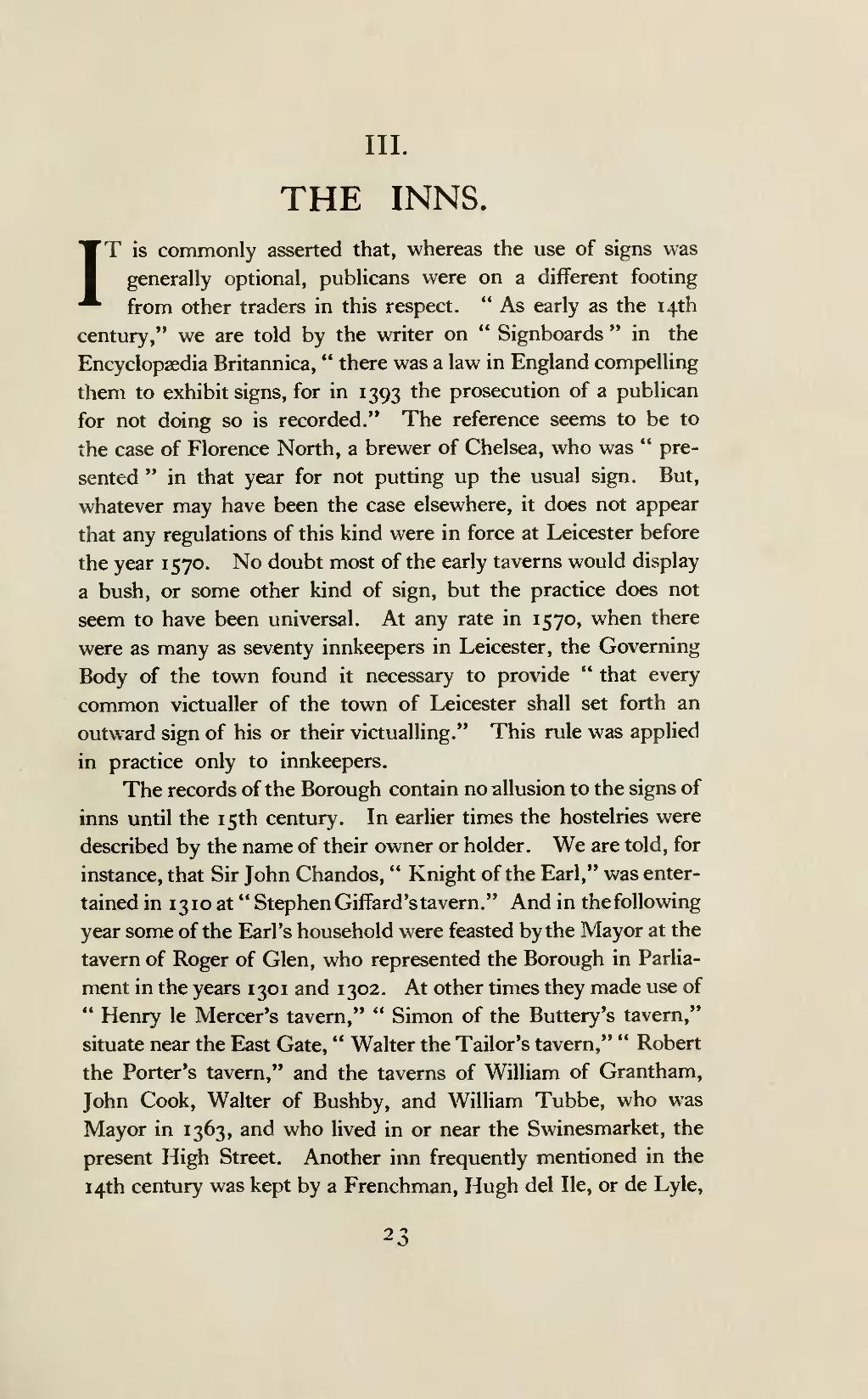III.
THE INNS.
IT is commonly asserted that, whereas the use of signs was generally optional, publicans were on a different footing from other traders in this respect. "As early as the 14th century," we are told by the writer on "Signboards" in the Encyclopædia Britannica, "there was a law in England compelling them to exhibit signs, for in 1393 the prosecution of a publican for not doing so is recorded." The reference seems to be to the case of Florence North, a brewer of Chelsea, who was "presented" in that year for not putting up the usual sign. But, whatever may have been the case elsewhere, it does not appear that any regulations of this kind were in force at Leicester before the year 1570. No doubt most of the early taverns would display a bush, or some other kind of sign, but the practice does not seem to have been universal. At any rate in 1570, when there were as many as seventy innkeepers in Leicester, the Governing Body of the town found it necessary to provide "that every common victualler of the town of Leicester shall set forth an outward sign of his or their victualling." This rule was applied in practice only to innkeepers.
The records of the Borough contain no allusion to the signs of inns until the 15th century. In earlier times the hostelries were described by the name of their owner or holder. We are told, for instance, that Sir John Chandos, "Knight of the Earl," was entertained in 1310 at "Stephen Giffard's tavern." And in the following year some of the Earl's household were feasted by the Mayor at the tavern of Roger of Glen, who represented the Borough in Parliament in the years 1301 and 1302. At other times they made use of "Henry le Mercer's tavern," "Simon of the Buttery's tavern," situate near the East Gate, "Walter the Tailor's tavern," "Robert the Porter's tavern," and the taverns of William of Grantham, John Cook, Walter of Bushby, and William Tubbe, who was Mayor in 1363, and who lived in or near the Swinesmarket, the present High Street. Another inn frequently mentioned in the 14th century was kept by a Frenchman, Hugh del Ile, or de Lyle,
23
